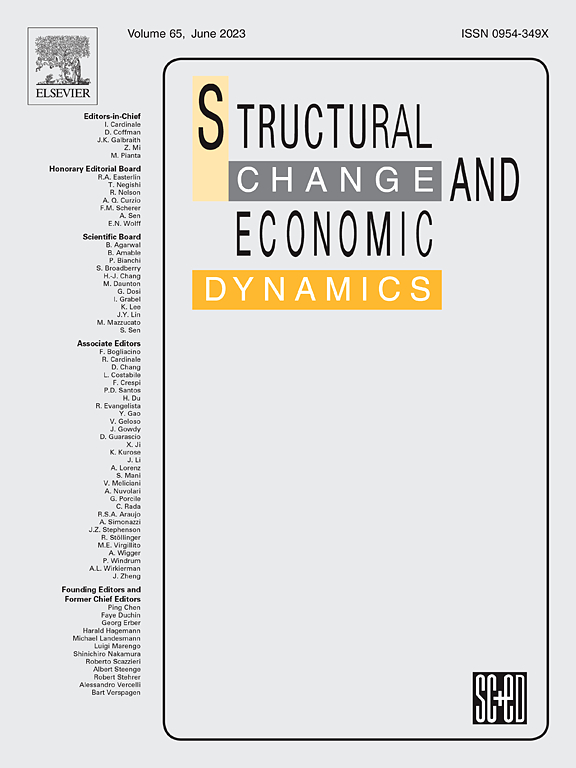基于五维分析模型的中国隐含碳排放关键路径识别
IF 5
2区 经济学
Q1 ECONOMICS
引用次数: 0
摘要
中国提出了2020年的“双碳目标”。碳减排已成为中国经济发展过程中的一个重要方面。面对区域碳排放差异显著、行业间联系复杂的现状,有必要从多个维度对供应链碳排放路径进行分解。在投入-产出-结构路径分析模型的基础上,构建了一个五维分析模型,旨在彻底厘清中国区域间、行业间的碳排放关系。结果表明,1997 - 2017年,城市家庭消费驱动的碳排放量从579.48 Mt增加到3302.71 Mt,运输仓储等服务驱动上游产生大量碳排放。最大的排放路径是山东的电供热和供水行业,满足城市居民的消费。应重点关注山西、山东电供热、供水行业的碳排放。本文章由计算机程序翻译,如有差异,请以英文原文为准。

Identification of key paths for embodied carbon emissions in China based on a five-dimensional analysis model
China proposed the "double carbon goals" in 2020. carbon emissions reduction has become a crucial aspect in China's economic development process. Faced with significant differences in regional carbon emissions, and complex inter-industry linkages, it is necessary to break down the carbon emission paths along the supply chain from multiple dimensions. Based on the input-output-structure path analysis model, we constructed a five-dimensional analysis model, aiming to thoroughly clarify China's inter-regional and inter-industry carbon emission relations. The results show that from 1997 to 2017, carbon emissions driven by urban household consumption have increased from 579.48 Mt to 3302.71 Mt. Transportation warehousing and other services have driven upstream to generate lots of carbon emissions. The largest emission path is generated by the electric heat and water supply industry in Shandong, meeting the consumption of urban residents. Carbon emissions generated by electric heat and water supply industry in Shanxi and Shandong should be focused.
求助全文
通过发布文献求助,成功后即可免费获取论文全文。
去求助
来源期刊

Structural Change and Economic Dynamics
ECONOMICS-
CiteScore
9.60
自引率
4.90%
发文量
159
期刊介绍:
Structural Change and Economic Dynamics publishes articles about theoretical, applied and methodological aspects of structural change in economic systems. The journal publishes work analysing dynamics and structural breaks in economic, technological, behavioural and institutional patterns.
 求助内容:
求助内容: 应助结果提醒方式:
应助结果提醒方式:


